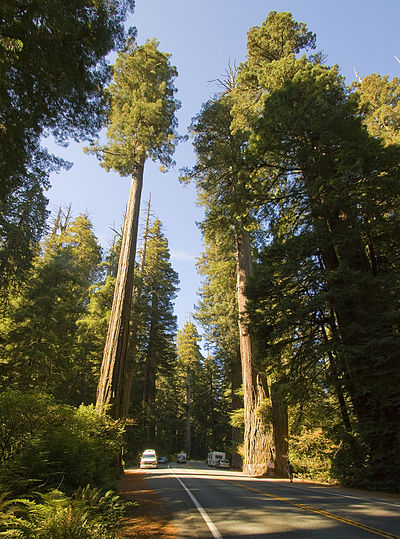
Wikipedia description
Sequoia sempervirens is the sole living species of the genus Sequoia in the cypress family Cupressaceae (formerly treated in Taxodiaceae). Common names include coast redwood, coastal redwood and California redwood. It is an evergreen, long-lived, monoecious tree living 1,200–1,800 years or more. This species includes the tallest living trees on Earth, reaching up to 379 feet (115.5 m) in height (without the roots) and up to 29.2 feet (8.9 m) in diameter at breast height (dbh). These trees are also among the oldest living things on Earth. Before commercial logging and clearing began by the 1850s, this massive tree occurred naturally in an estimated 2,100,000 acres (8,500 km2) along much of coastal California (excluding southern California where rainfall is not sufficient) and the southwestern corner of coastal Oregon within the United States.
The name sequoia sometimes refers to the subfamily Sequoioideae, which includes S. sempervirens along with Sequoiadendron (giant sequoia) and Metasequoia (dawn redwood). Here, the term redwood on its own refers to the species covered in this article, and not to the other two species.
Scientific classification
Samples